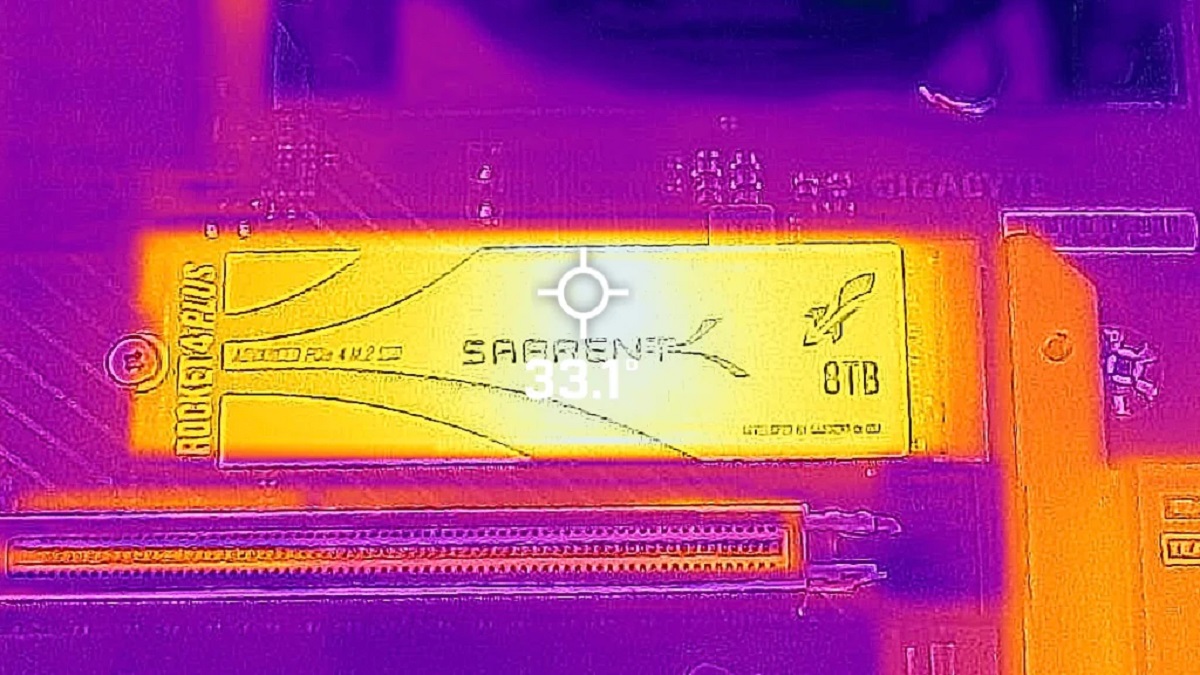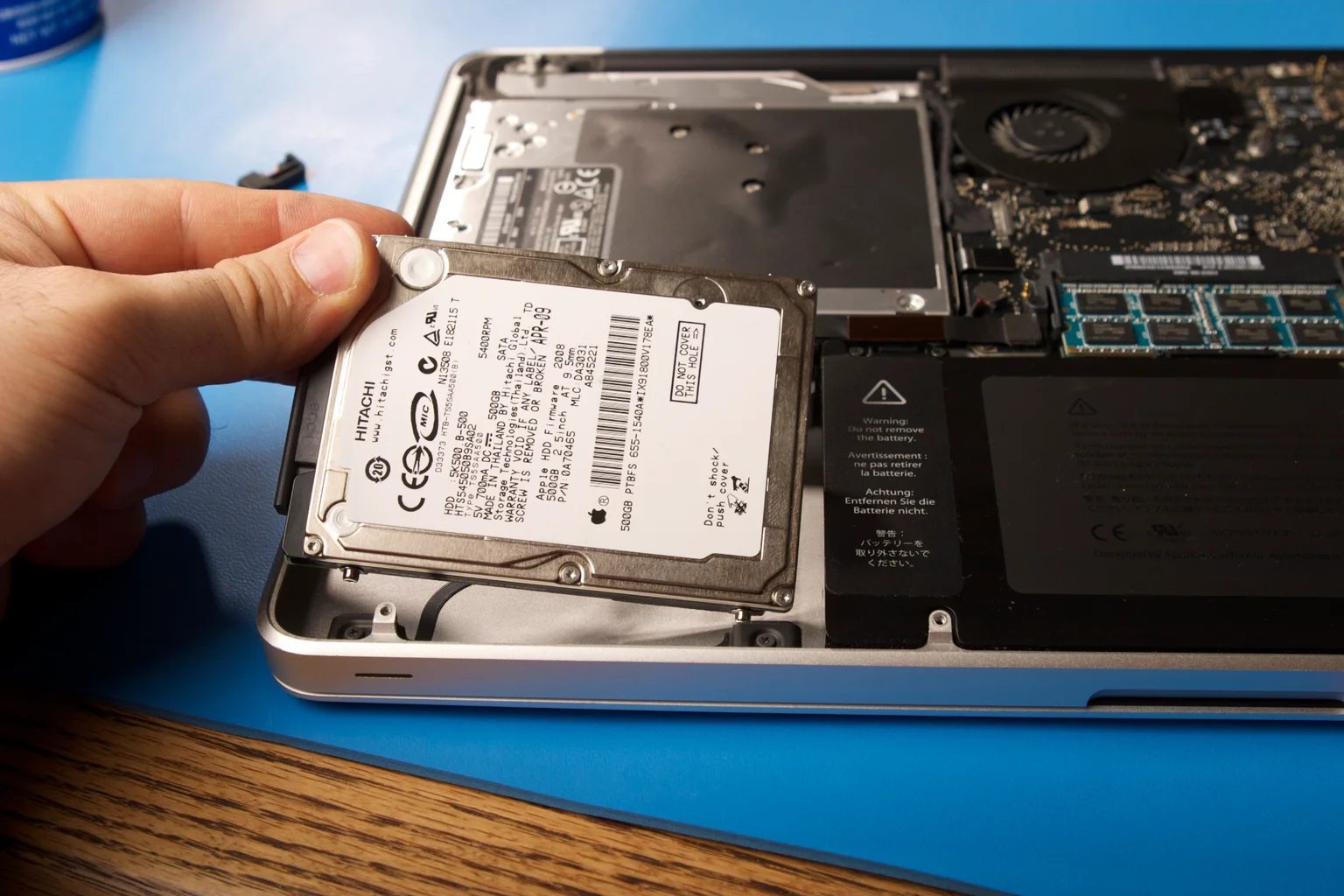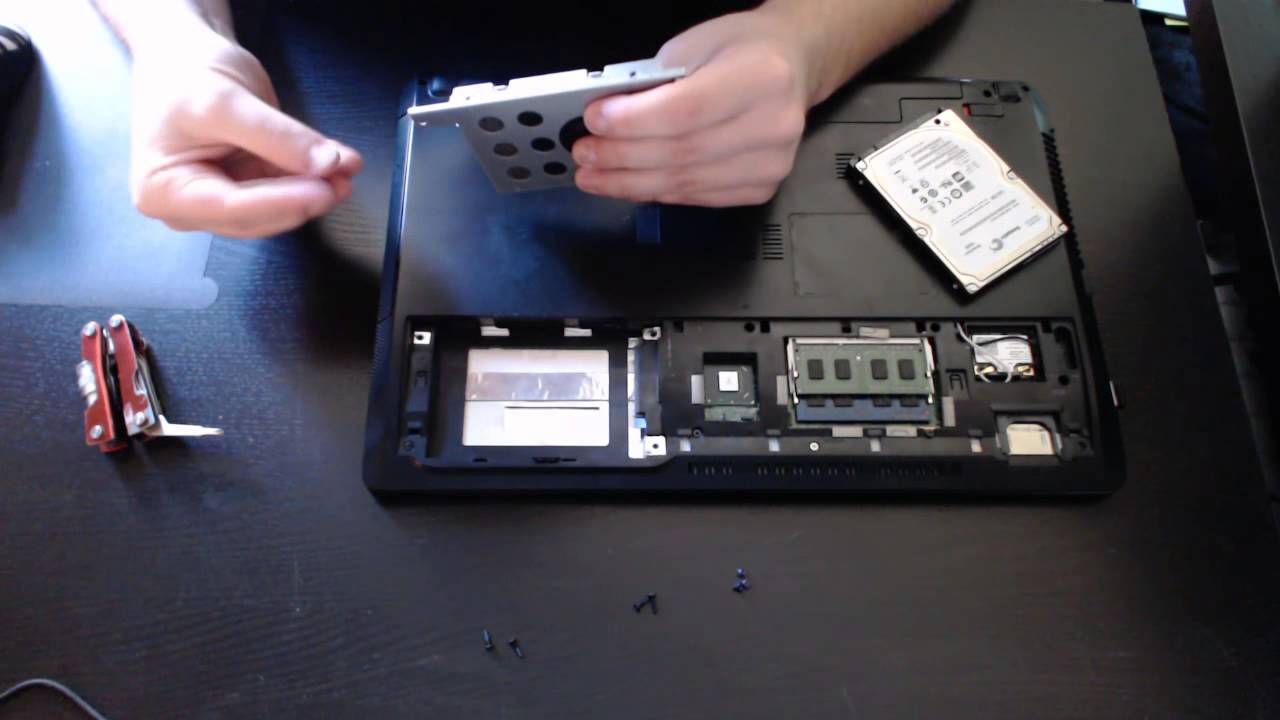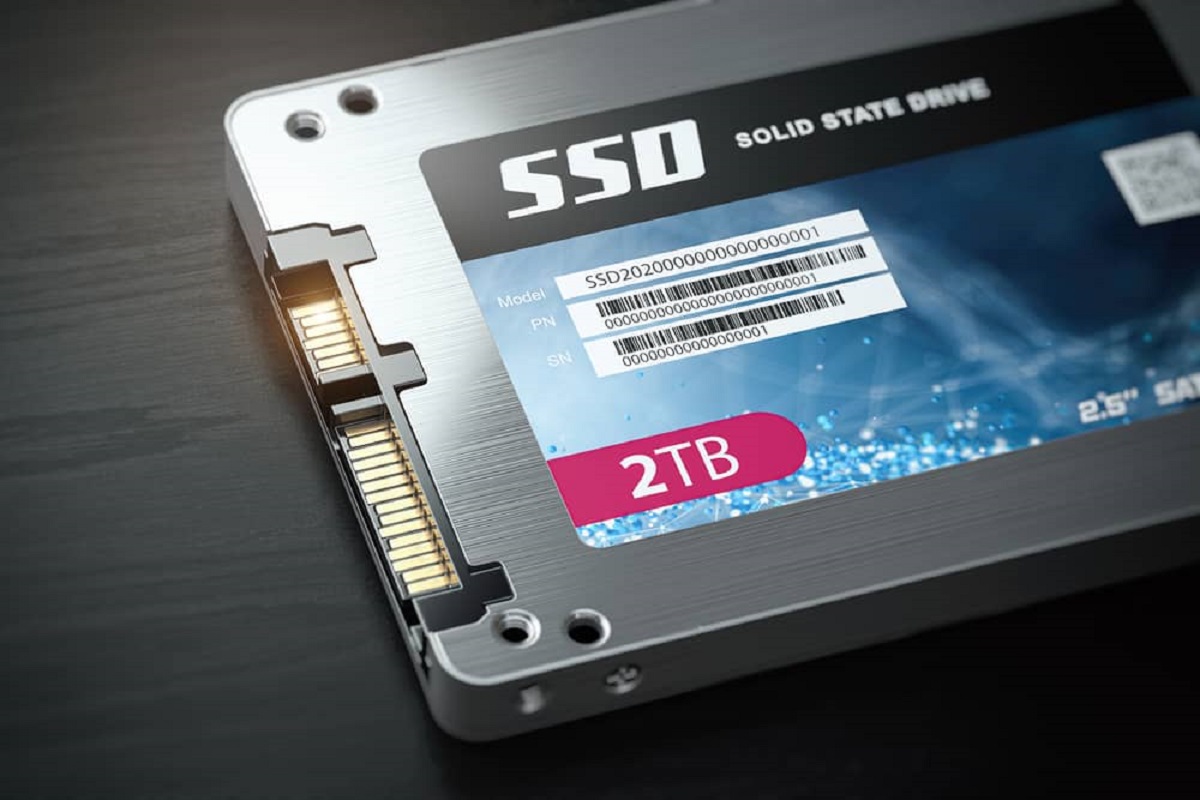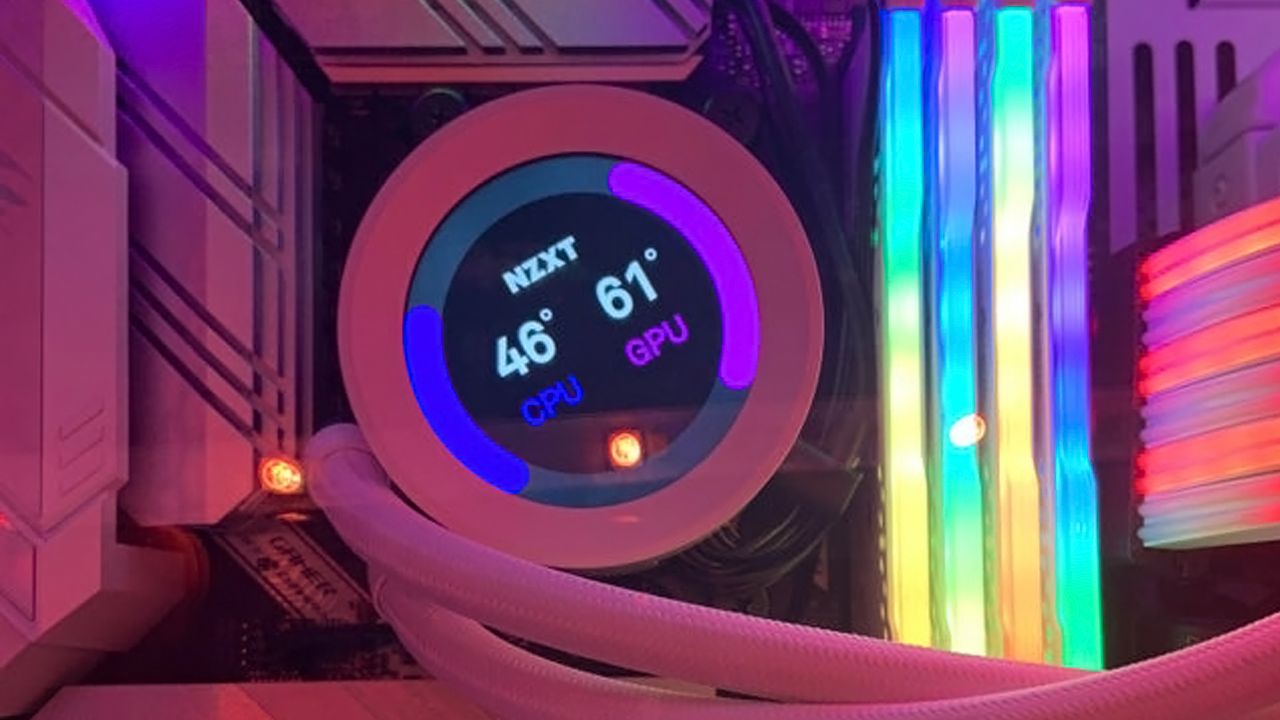Introduction
In today’s technology-driven world, solid-state drives (SSDs) have become the go-to choice for high-speed and reliable storage. However, like any electronic device, SSDs generate heat during operation. Excessive heat can affect the performance and lifespan of your SSD, making it crucial to monitor its temperature regularly. By keeping your SSD within an optimal temperature range, you can ensure its longevity and prevent potential data loss.
Monitoring the temperature of your SSD allows you to identify any overheating issues and take appropriate measures to prevent hardware failures. Overheating can occur due to factors such as inadequate ventilation, heavy workloads, or improper system configurations. Additionally, in some cases, a high ambient temperature can impact the SSD’s temperature, making temperature monitoring even more crucial.
This article aims to provide you with different methods to check the temperature of your SSD. We will explore how to use third-party software, check the BIOS setup, and utilize the command prompt for temperature monitoring. Furthermore, we will offer some tips to keep your SSD cool and discuss the importance of maintaining optimal temperatures for your SSD’s health and performance.
Whether you are a gaming enthusiast, a professional video editor, or simply a computer user who wants to ensure the longevity of their storage device, understanding how to check your SSD’s temperature is vital. So, let’s dive in and learn about the different methods for monitoring the temperature of your SSD.
Why is it important to check SSD temperature?
Monitoring the temperature of your SSD is essential for several reasons. Here are some key reasons why it is important to regularly check the temperature of your SSD:
1. Performance Optimization: SSDs tend to perform at their best when operating within a specific temperature range. If the temperature exceeds the recommended threshold, it can result in performance degradation. By monitoring the temperature, you can ensure that your SSD maintains optimal performance levels.
2. Preventing Data Loss: Overheating can lead to data corruption or even complete data loss. Excessive heat can cause the components of your SSD to malfunction, leading to irreversible damage to your stored data. By checking the temperature regularly, you can identify potential issues and take preventive measures to safeguard your valuable data.
3. Extending SSD Lifespan: High temperatures can significantly shorten the lifespan of your SSD. Excessive heat puts strain on the components, causing them to degrade faster. By keeping the temperature in check, you can increase the longevity of your SSD and avoid the need for premature replacements.
4. Early Detection of Hardware Issues: Monitoring the temperature of your SSD allows you to detect any underlying hardware issues. If the temperature consistently exceeds the recommended range, it could be an indicator of poor cooling, a faulty fan, or improper system configuration. Identifying these issues early on can help you troubleshoot and resolve them before they cause severe damage to your SSD.
5. Preventing System Instability: When an SSD operates at high temperatures, it can lead to system instability, random crashes, and freezes. These issues can disrupt your workflow and cause frustration. Regularly checking the temperature can help you maintain system stability and prevent such problems from occurring.
By understanding the importance of monitoring your SSD’s temperature, you can take proactive measures to ensure optimal performance, prevent data loss, extend the lifespan of your SSD, and maintain system stability.
Now that we understand the significance of monitoring the temperature of your SSD, let’s explore the different methods to check the temperature in the next section.
How to check SSD temperature
Checking the temperature of your SSD is a straightforward process that can be done in several ways. Here are three commonly used methods to monitor the temperature of your SSD:
Method 1: Using Third-Party Software
There are numerous third-party software applications available that allow you to monitor the temperature of your SSD. One popular option is CrystalDiskInfo. After installing the software, simply launch it, and it will display the temperature of your SSD along with other drive information. Other popular software options include HWMonitor, SSD Health, and Open Hardware Monitor.
Method 2: Checking BIOS Setup
Many modern computer systems provide the option to check the temperature of your hardware components, including SSDs, directly from the BIOS (Basic Input/Output System) setup. To access the BIOS, restart your computer and press the required key (usually displayed on the screen) during the boot process. Once in the BIOS, navigate to the Hardware or Health section, where you will find information about your SSD’s temperature.
Method 3: Using Command Prompt
If you prefer a command-line interface, you can check your SSD’s temperature using the Command Prompt utility in Windows. Open the Command Prompt by pressing the Windows key + R, typing “cmd” in the Run dialog box, and pressing Enter. In the Command Prompt window, type the command “wmic /namespace:\root\wmi PATH MSStorageDriver_FailurePredictStatus” and press Enter. This command will display the temperature, along with other information about your SSD.
It is important to note that the availability of these methods may vary depending on your system configuration and SSD model. Additionally, some SSD manufacturers provide their own monitoring software, which can be downloaded from their official websites.
Remember that while monitoring the temperature of your SSD is valuable, it is equally important to interpret the readings correctly. SSDs operate within a safe temperature range, typically between 40 and 65 degrees Celsius (104 and 149 degrees Fahrenheit). However, it is recommended to consult your SSD manufacturer’s guidelines to determine the specific temperature limits for your SSD.
Now that we have explored various methods to check your SSD’s temperature, let’s move on to some tips on how to keep your SSD cool in the next section.
Method 1: Using Third-Party Software
One convenient way to monitor the temperature of your SSD is by using third-party software applications designed specifically for this purpose. These software tools provide detailed information about your SSD’s temperature and other important drive metrics. Here’s how you can check your SSD temperature using third-party software:
1. Choose a reliable software: There are several trusted third-party software programs available for monitoring SSD temperature. CrystalDiskInfo is a popular option known for its user-friendly interface and accurate temperature readings. Other software applications such as HWMonitor, SSD Health, and Open Hardware Monitor also offer similar functionality.
2. Download and install the software: Visit the official website of the chosen software and download the appropriate version for your operating system. Once the download is complete, run the installation file and follow the on-screen instructions to install the software on your computer.
3. Launch the software: After installation, launch the software from the desktop icon or the start menu. The software will automatically detect and display the temperature of your SSD, along with other drive information such as model, capacity, and health status.
4. Monitor the temperature: The software will typically provide a real-time temperature reading of your SSD. Some tools may also offer options to display temperature in Celsius or Fahrenheit, or even allow you to set temperature thresholds for alerts. Regularly check the software to ensure your SSD’s temperature remains within the recommended range.
5. Explore additional features: Third-party software programs often come with additional features like S.M.A.R.T. (Self-Monitoring, Analysis, and Reporting Technology) data monitoring, which can provide insights about your SSD’s overall health and performance. Take advantage of these features to ensure your SSD is functioning optimally.
Remember to download third-party software applications only from reputable sources to avoid malware or adware. It is also recommended to periodically update the software to benefit from the latest features and bug fixes.
Using third-party software is an efficient and user-friendly way to monitor your SSD’s temperature. However, it is crucial to understand that different software programs may provide slightly different temperature readings. For accurate comparisons, it is recommended to stick to a specific software tool and track temperature changes relative to its readings.
Now that we have covered the first method, let’s move on to exploring another method to check your SSD’s temperature – checking the BIOS setup.
Method 2: Checking BIOS Setup
Another reliable way to check the temperature of your SSD is by accessing the BIOS (Basic Input/Output System) setup. Most modern computer systems provide the option to view hardware information, including SSD temperature, directly from the BIOS. Here’s how you can check your SSD temperature using the BIOS setup:
1. Restart your computer: Begin by restarting your computer. As the computer restarts, you will need to press a specific key to access the BIOS setup. The required key is usually displayed on the screen during the boot process. Common keys include Del, F2, F10, or Esc. Press the designated key before the operating system begins to load.
2. Enter BIOS setup: Once you press the correct key, your system will enter the BIOS setup. The BIOS interface may vary depending on your motherboard manufacturer. Navigate through the available options using the arrow keys on your keyboard.
3. Locate hardware or health section: Look for the section in the BIOS menu that provides hardware information or health status. Some BIOS versions may have a dedicated section for monitoring temperatures, while others may display overall hardware information that includes temperature readings.
4. Check SSD temperature: Within the hardware or health section, you should find the temperature information for your SSD. The temperature might be listed alongside other drive details, such as model, capacity, and SMART status.
5. Exit BIOS setup: Once you have checked the SSD temperature, navigate to the exit or save settings option in the BIOS menu. Select the option to save the changes and exit the BIOS setup. Your computer will then continue to boot into the operating system.
Checking the temperature through the BIOS setup provides a direct and reliable reading. However, it is important to note that accessing the BIOS may not be as user-friendly as using third-party software. The BIOS interface can vary, and the temperature display might not be as precise or detailed compared to software options.
It is also worth mentioning that some BIOS versions may not provide temperature information for SSDs specifically. In such cases, you may need to rely on other methods, such as third-party software, to monitor the temperature of your SSD.
Now that we have explored the second method of checking SSD temperature, let’s move on to the third and final method – using the Command Prompt.
Method 3: Using Command Prompt
If you prefer a command-line interface, you can use the Command Prompt utility in Windows to check the temperature of your SSD. This method provides a straightforward way to retrieve temperature information without the need for third-party software. Here’s how you can check your SSD temperature using the Command Prompt:
1. Open Command Prompt: Press the Windows key + R on your keyboard to open the Run dialog box. Type “cmd” in the box and press Enter. This will launch the Command Prompt window.
2. Type the command: In the Command Prompt window, type the following command and press Enter: “wmic /namespace:\root\wmi PATH MSStorageDriver_FailurePredictStatus”
3. Retrieve the temperature: After executing the command, you will see a list of information about your storage devices, including your SSD. Look for the “Temperature” value, which represents the current temperature of your SSD.
4. Interpret the temperature: The temperature value provided may be in Celsius or Kelvin. Convert it to Celsius if necessary for better readability. Note that the specific temperature thresholds for your SSD may depend on the manufacturer’s guidelines. Ensure that your SSD’s temperature is within the recommended range for optimal performance and longevity.
Using the Command Prompt to check SSD temperature is a quick method that provides direct access to important drive information. However, it may not have the same level of user-friendliness or graphical interface as other methods, such as third-party software.
It is worth mentioning that this method relies on the Windows Management Instrumentation Command-line (WMIC) utility. While it is available on most Windows systems, some older or specialized versions of Windows may not have this utility. In such cases, alternative methods, such as third-party software or BIOS setup, can be used to check SSD temperature.
By leveraging the Command Prompt, you can retrieve temperature information for your SSD quickly and efficiently, making it a convenient option for users who prefer command-line interfaces.
Now that we have covered the three methods for checking SSD temperature, let’s move on to some tips on how to keep your SSD cool and operating at optimal temperatures.
Tips to keep your SSD cool
Properly maintaining the temperature of your SSD is crucial for its performance and longevity. Here are some tips to help you keep your SSD cool:
1. Ensure proper airflow: Adequate airflow within your computer case is essential for cooling your SSD. Make sure that your computer case has proper ventilation and that the fans are clean and functioning correctly. Consider adding additional fans or upgrading to more efficient cooling solutions if necessary.
2. Avoid blocking air vents: Keep the air vents on your computer case clear from obstructions. Ensure that no objects or cables are blocking the vents, as this can restrict the airflow and result in higher temperatures.
3. Optimize cable management: Proper cable management inside your computer case helps to improve airflow and prevent cables from obstructing the cooling mechanisms. Organize and secure cables using cable ties or routing channels to maintain a tidy and unobstructed airflow path.
4. Use cooling pads or external cooling solutions: If you have a laptop with an SSD, consider using a cooling pad that can help dissipate heat more effectively. External cooling solutions, such as laptop cooling stands or cooling mats, can also aid in reducing SSD temperatures.
5. Avoid placing your computer in direct sunlight: Direct exposure to sunlight can significantly increase the temperature inside your computer case. Position your computer in a well-ventilated area away from direct sunlight to prevent unnecessary heat buildup.
6. Minimize heavy workloads: Intensive tasks that put a strain on your SSD, such as prolonged gaming sessions or lengthy file transfers, can generate excessive heat. Try to minimize these heavy workloads or take breaks to allow your SSD to cool down.
7. Regularly clean your computer: Dust accumulation on the SSD, fans, and other components can hinder proper airflow and result in increased temperatures. Regularly clean your computer, especially the intake and exhaust areas, using compressed air or a soft brush to remove dust and debris.
8. Monitor and manage background processes: Some background processes and applications can put unnecessary stress on your SSD, leading to higher temperatures. Monitor and manage these processes to ensure they are not running excessively and causing the SSD to overheat.
By following these tips, you can effectively manage the temperature of your SSD and maintain optimal performance and longevity.
Now that we have explored ways to keep your SSD cool, let’s conclude this article by summarizing the importance of monitoring and maintaining the temperature of your SSD.
Conclusion
Monitoring the temperature of your SSD is crucial for ensuring its optimal performance, longevity, and data integrity. Overheating can lead to performance degradation, data loss, hardware failures, and system instability. To avoid these issues, it is important to regularly check the temperature of your SSD and take proactive measures to keep it within the recommended range.
In this article, we explored three methods to check the temperature of your SSD: using third-party software, checking the BIOS setup, and using the Command Prompt. Each method offers its own advantages, allowing you to choose the one that best suits your preferences and system configuration.
Additionally, we provided tips to help you keep your SSD cool, such as ensuring proper airflow, avoiding obstructions, optimizing cable management, and minimizing heavy workloads. These tips, when followed, can significantly improve the temperature management of your SSD and contribute to its longevity.
Remember, a properly cooled SSD not only performs better but also lasts longer, ensuring the safety of your valuable data and providing a smoother computing experience.
So, whether you are a gamer, a professional content creator, or an everyday computer user, make it a priority to monitor and maintain the temperature of your SSD. By doing so, you can maximize its performance, extend its lifespan, and avoid potential hardware failures or data loss.
Stay vigilant, implement the necessary measures, and enjoy the optimal performance and durability that your SSD has to offer.







